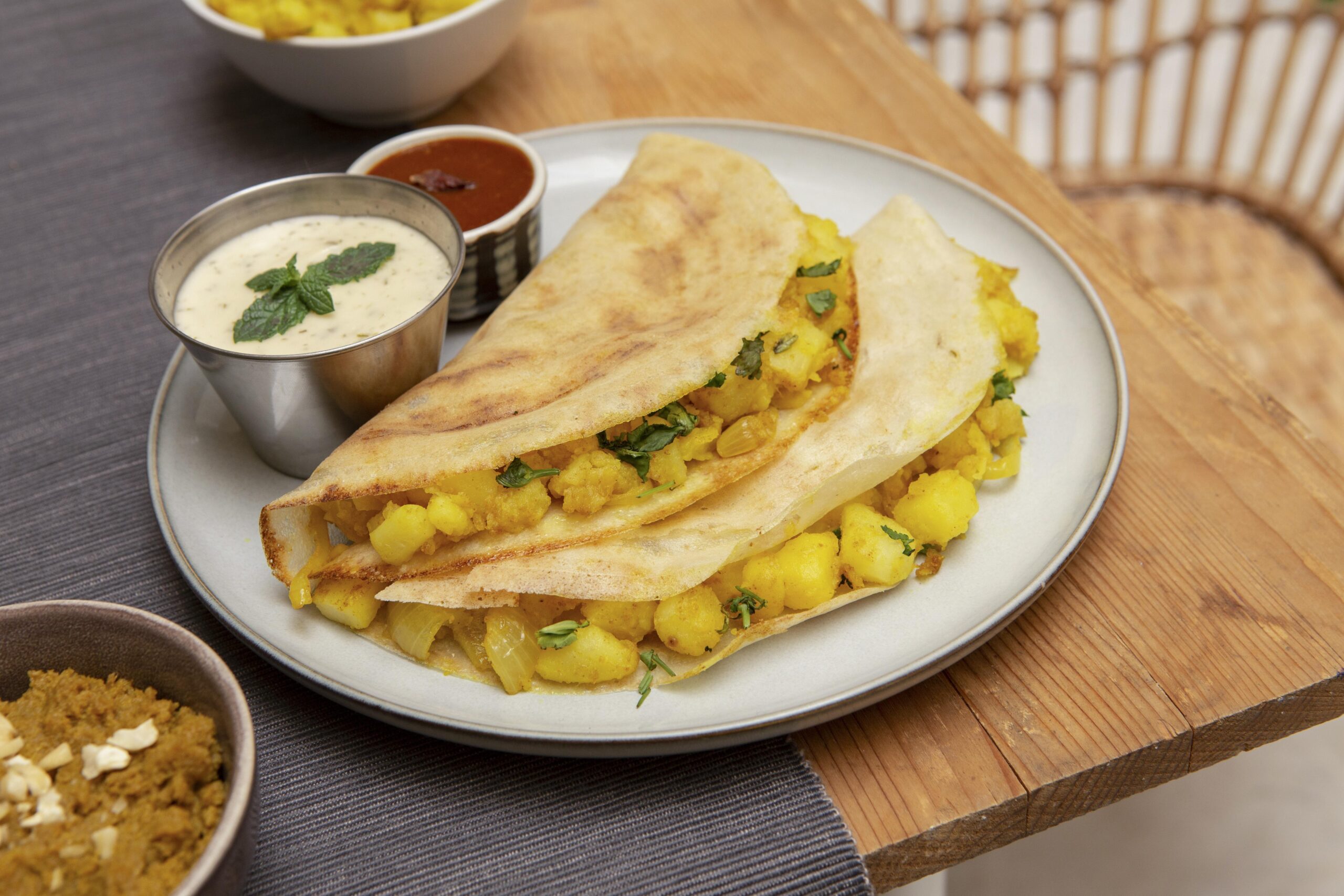
How to Make Masala Dosa at Home – A Step-by-Step Guide
Introduction:
Embark on a culinary journey as we delve into the art of crafting the perfect Masala Dosa right in the heart of your home kitchen. This iconic South Indian dish, known for its crisp golden exterior and flavorful potato filling, is a beloved favorite across the globe. In this comprehensive guide, we’ll explore the intricacies of making Masala Dosa from scratch, ensuring your homemade creation rivals the authenticity and taste found in the best dosa joints.
Unraveling the Essence of Masala Dosa:
Masala Dosa is more than just a meal; it’s a culinary experience that encapsulates the essence of South Indian flavors. Originating from Karnataka, this delectable dish has gained worldwide acclaim for its unique preparation and irresistible taste. The thin, crispy rice crepe, filled with a spiced potato mixture and served with coconut chutney and tangy sambar, makes Masala Dosa a wholesome and fulfilling delight. Whether enjoyed for breakfast, brunch, or any time of the day, the magic of Masala Dosa lies in the perfect balance of textures and the symphony of flavors it brings to the table.
Ingredients for Culinary Excellence:
To embark on the journey of making Masala Dosa at home, gather the following ingredients:
For Dosa Batter:
- 1 cup urad dal (black gram)
- 2 cups idli rice or dosa rice
- 1/2 cup flattened rice (poha)
- 1/2 teaspoon fenugreek seeds
- Salt to taste
For Potato Filling:
- 4 large potatoes, boiled and mashed
- 1 onion, finely chopped
- 2 green chilies, finely chopped
- 1/2 teaspoon mustard seeds
- 1/2 teaspoon cumin seeds
- A pinch of asafoetida (hing)
- Curry leaves for flavor
- 1/2 teaspoon turmeric powder
- Salt to taste
- Chopped coriander leaves for garnish
For Dosa Tawa Seasoning:
- Oil or ghee
Crafting the Perfect Masala Dosa:
Step 1: Preparing Dosa Batter
- Wash urad dal and rice separately, soaking them along with fenugreek seeds for 4-6 hours.
- Grind urad dal to a smooth, fluffy consistency. Grind rice and poha to a slightly coarse texture.
- Mix both batters, adding salt, and allow it to ferment overnight.
Step 2: Making Potato Filling
- In a pan, heat oil and add mustard seeds, cumin seeds, hing, and curry leaves.
- Add chopped onions and green chilies, sautéing until onions turn golden brown.
- Stir in turmeric powder and mashed potatoes. Season with salt and garnish with coriander leaves.
Step 3: Cooking Dosa
- Heat a dosa tawa and spread a ladleful of dosa batter, spreading it in a circular motion.
- Drizzle oil or ghee around the edges and cook until the dosa turns golden brown and crisp.
- Place a portion of the prepared potato filling on one half of the dosa and fold it over.
Step 4: Serving with Chutney and Sambar
- Serve Masala Dosa hot with coconut chutney and sambar for a complete South Indian culinary experience.
Tips for Perfection:
- Fermentation Magic:
- Allow the dosa batter to ferment overnight for a light, airy texture in the dosa.
- Dosa Tawa Temperature:
- Maintain the right temperature of the tawa—too hot can lead to burning, and too cold can result in a sticky dosa.
- Thin and Even Spreading:
- Spread the dosa batter thinly and evenly for a crisp dosa with a delicate texture.
- Perfect Potato Consistency:
- Ensure the potato filling is well-seasoned and mashed to a consistent texture for a balanced flavor profile.
- Experiment with Fillings:
- Get creative with dosa fillings—try cheese, mixed vegetables, or even paneer for unique variations.
Serving Suggestions and Variations:
Masala Dosa is traditionally served with coconut chutney and sambar, but you can also enjoy it with a side of tangy tomato chutney or spicy mint chutney. Experiment with variations by adding a layer of red chutney or including a thin spread of ghee on the dosa for an extra layer of richness. Consider making mini dosas for a fun appetizer or experimenting with different rice varieties for unique textures. The versatility of Masala Dosa allows you to tailor it to your taste preferences, making it a go-to recipe for dosa lovers.
SEO Optimization Tips for Your Blog:
- Keyword Placement:
- Strategically include the keyword “How to Make Masala Dosa at Home” in headings, subheadings, and the meta description for improved search engine visibility.
- Engaging Introduction:
- Craft an engaging introduction that incorporates the keyword, setting the stage for a compelling narrative.
- Step-by-Step Format:
- Organize the recipe in a clear step-by-step format with headings, making it easy for readers to follow and search engines to index.
- High-Quality Images:
- Include high-quality images of each step, optimizing them with descriptive alt text that includes the keyword.
By seamlessly integrating these tips into your blog, you’ll not only share a mouthwatering Masala Dosa recipe but also enhance your blog’s visibility and engagement. Happy blogging!

Awsome info and straight to the point. I don’t know
if this is really the best place to ask but do you folks
have any thoughts on where to hire some professional
writers? Thx 🙂 Najlepsze escape roomy